[English] 日本語
 Yorodumi
Yorodumi- PDB-5t1o: Solution-state NMR and SAXS structural ensemble of NPr (1-85) in ... -
+ Open data
Open data
- Basic information
Basic information
| Entry | Database: PDB / ID: 5t1o | |||||||||
|---|---|---|---|---|---|---|---|---|---|---|
| Title | Solution-state NMR and SAXS structural ensemble of NPr (1-85) in complex with EIN-Ntr (170-424) | |||||||||
 Components Components |
| |||||||||
 Keywords Keywords |  TRANSFERASE / PTSNtr / phosphotransfer / TRANSFERASE / PTSNtr / phosphotransfer /  bacterial / bacterial /  complex complex | |||||||||
| Function / homology |  Function and homology information Function and homology information phosphoenolpyruvate-protein phosphotransferase / phosphoenolpyruvate-protein phosphotransferase /  phosphoenolpyruvate-protein phosphotransferase activity / transferase activity, transferring phosphorus-containing groups / phosphoenolpyruvate-dependent sugar phosphotransferase system / response to organonitrogen compound / phosphoenolpyruvate-protein phosphotransferase activity / transferase activity, transferring phosphorus-containing groups / phosphoenolpyruvate-dependent sugar phosphotransferase system / response to organonitrogen compound /  kinase activity / kinase activity /  phosphorylation / phosphorylation /  metal ion binding / metal ion binding /  cytoplasm cytoplasmSimilarity search - Function | |||||||||
| Biological species |   Escherichia coli O157:H7 (bacteria) Escherichia coli O157:H7 (bacteria)  Escherichia coli (E. coli) Escherichia coli (E. coli) | |||||||||
| Method |  SOLUTION NMR / SOLUTION NMR /  SOLUTION SCATTERING / SOLUTION SCATTERING /  simulated annealing simulated annealing | |||||||||
 Authors Authors | Strickland, M. / Stanley, A.M. / Wang, G. / Schwieters, C.D. / Buchanan, S. / Peterkofsky, A. / Tjandra, N. | |||||||||
| Funding support |  United States, 2items United States, 2items
| |||||||||
 Citation Citation |  Journal: Structure / Year: 2016 Journal: Structure / Year: 2016Title: Structure of the NPr:EIN(Ntr) Complex: Mechanism for Specificity in Paralogous Phosphotransferase Systems. Authors: Strickland, M. / Stanley, A.M. / Wang, G. / Botos, I. / Schwieters, C.D. / Buchanan, S.K. / Peterkofsky, A. / Tjandra, N. | |||||||||
| History |
|
- Structure visualization
Structure visualization
| Structure viewer | Molecule:  Molmil Molmil Jmol/JSmol Jmol/JSmol |
|---|
- Downloads & links
Downloads & links
- Download
Download
| PDBx/mmCIF format |  5t1o.cif.gz 5t1o.cif.gz | 2 MB | Display |  PDBx/mmCIF format PDBx/mmCIF format |
|---|---|---|---|---|
| PDB format |  pdb5t1o.ent.gz pdb5t1o.ent.gz | 1.7 MB | Display |  PDB format PDB format |
| PDBx/mmJSON format |  5t1o.json.gz 5t1o.json.gz | Tree view |  PDBx/mmJSON format PDBx/mmJSON format | |
| Others |  Other downloads Other downloads |
-Validation report
| Arichive directory |  https://data.pdbj.org/pub/pdb/validation_reports/t1/5t1o https://data.pdbj.org/pub/pdb/validation_reports/t1/5t1o ftp://data.pdbj.org/pub/pdb/validation_reports/t1/5t1o ftp://data.pdbj.org/pub/pdb/validation_reports/t1/5t1o | HTTPS FTP |
|---|
-Related structure data
| Related structure data |  5t12C 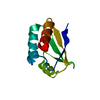 5t1nC C: citing same article ( |
|---|---|
| Similar structure data | |
| Other databases |
|
- Links
Links
- Assembly
Assembly
| Deposited unit | 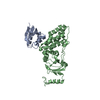
| |||||||||
|---|---|---|---|---|---|---|---|---|---|---|
| 1 |
| |||||||||
| NMR ensembles |
| |||||||||
| Details | Size exclusion gel filtration was used to determine that this is a 1:1 protein interaction and both proteins are monomers. Small angle X-ray scattering confirmed this and was used as a restraint in the structure calculation |
- Components
Components
| #1: Protein | Mass: 9254.570 Da / Num. of mol.: 1 Source method: isolated from a genetically manipulated source Source: (gene. exp.)   Escherichia coli O157:H7 (bacteria) / Gene: ptsO, Z4569, ECs4085 / Plasmid: Plasmid / Details (production host): pETDuet1 / Production host: Escherichia coli O157:H7 (bacteria) / Gene: ptsO, Z4569, ECs4085 / Plasmid: Plasmid / Details (production host): pETDuet1 / Production host:   Escherichia coli (E. coli) / Strain (production host): ER2566 Escherichia coli (E. coli) / Strain (production host): ER2566References: UniProt: P0A9N2, UniProt: P0A9N0*PLUS,  Transferases; Transferring phosphorus-containing groups; Protein-serine/threonine kinases Transferases; Transferring phosphorus-containing groups; Protein-serine/threonine kinases |
|---|---|
| #2: Protein | Mass: 28380.070 Da / Num. of mol.: 1 / Mutation: H356Q Source method: isolated from a genetically manipulated source Details: This molecule was mutated at position 356 from histidine to glutamine. In E. coli, when the native histidine is present, the sample can be phosphorylated. It was mutated to provide a ...Details: This molecule was mutated at position 356 from histidine to glutamine. In E. coli, when the native histidine is present, the sample can be phosphorylated. It was mutated to provide a homogeneous sample. Additionally, it comprises residues 170-424 of the larger Enzyme I-Ntr molecule. Residue 169 is mutated to glycine due to TEV protease cleavage. Source: (gene. exp.)   Escherichia coli (strain K12) (bacteria) Escherichia coli (strain K12) (bacteria)Strain: K12 / Gene: ptsP, ygdF, ygdO, b2829, JW2797 / Plasmid: pET28a / Production host:   Escherichia coli (E. coli) / Strain (production host): ER2566 Escherichia coli (E. coli) / Strain (production host): ER2566References: UniProt: P37177,  phosphoenolpyruvate-protein phosphotransferase phosphoenolpyruvate-protein phosphotransferase |
-Experimental details
-Experiment
| Experiment |
| ||||||||||||||||||||||||||||||||||||||||||||||||||||||||||||||||||||||||||||||||||||||||||||||||||||||||||||||||||||||||||||||
|---|---|---|---|---|---|---|---|---|---|---|---|---|---|---|---|---|---|---|---|---|---|---|---|---|---|---|---|---|---|---|---|---|---|---|---|---|---|---|---|---|---|---|---|---|---|---|---|---|---|---|---|---|---|---|---|---|---|---|---|---|---|---|---|---|---|---|---|---|---|---|---|---|---|---|---|---|---|---|---|---|---|---|---|---|---|---|---|---|---|---|---|---|---|---|---|---|---|---|---|---|---|---|---|---|---|---|---|---|---|---|---|---|---|---|---|---|---|---|---|---|---|---|---|---|---|---|---|
| NMR experiment |
|
- Sample preparation
Sample preparation
| Details |
| |||||||||||||||||||||||||||||||||||||||||||||||||||||||||||||||||||||||||||||||||||
|---|---|---|---|---|---|---|---|---|---|---|---|---|---|---|---|---|---|---|---|---|---|---|---|---|---|---|---|---|---|---|---|---|---|---|---|---|---|---|---|---|---|---|---|---|---|---|---|---|---|---|---|---|---|---|---|---|---|---|---|---|---|---|---|---|---|---|---|---|---|---|---|---|---|---|---|---|---|---|---|---|---|---|---|---|
| Sample |
|
 Movie
Movie Controller
Controller



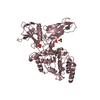


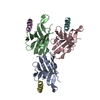
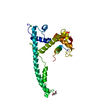

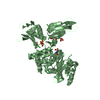


 PDBj
PDBj

